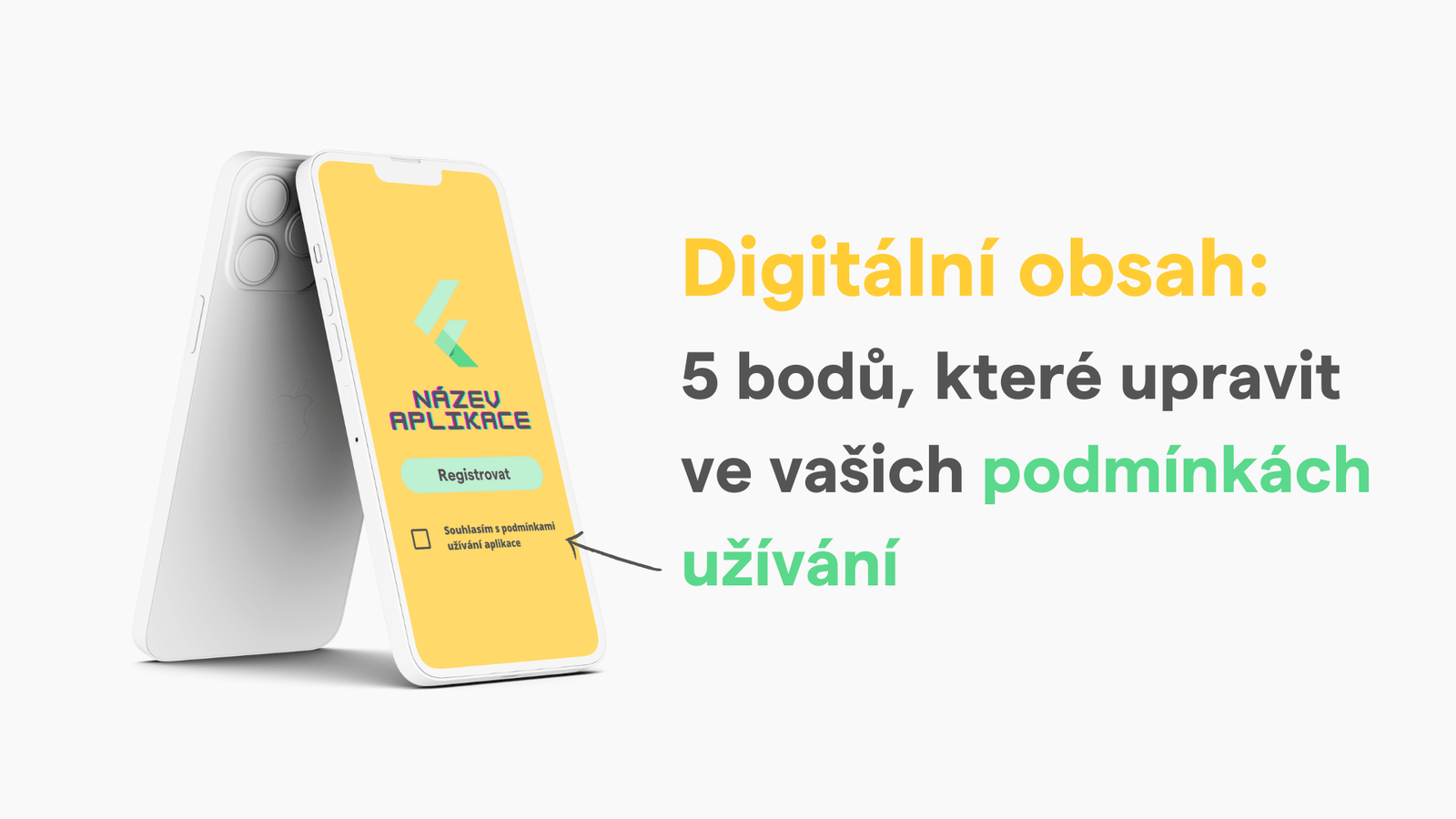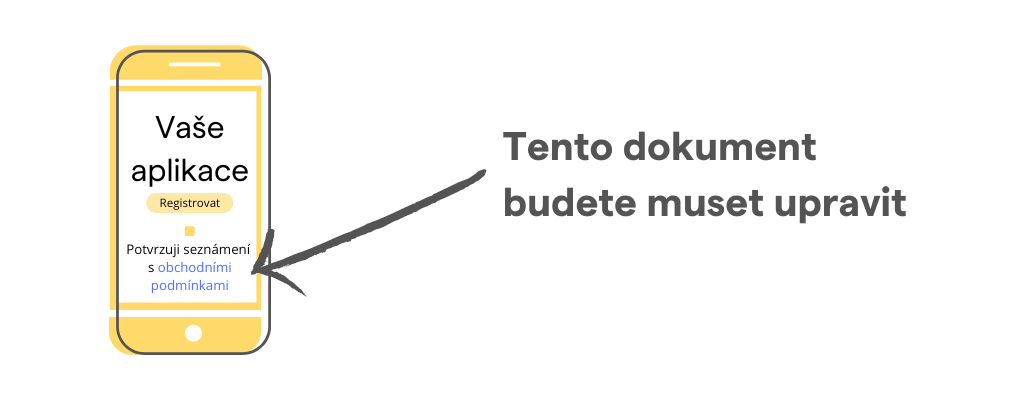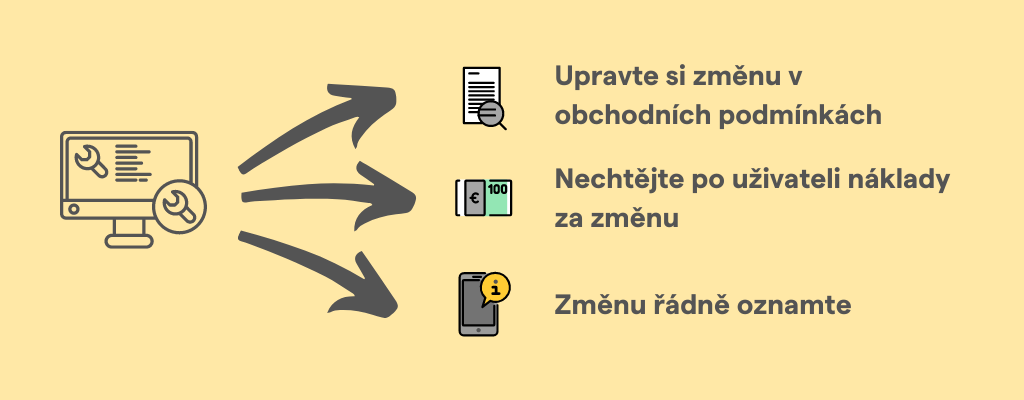


The beginning of the year 2023 has been revolutionary for digital content providers, and we are the first in Czech Republic to bring you an english article that elaborates on this. If you provide digital service to czech republic, or you plan to provide said service, you should get to know the new amendment to consumer law ↗. Among other things, it brought about the introduction of a new type of contract - the digital content contract.
Whether you are a SaaS provider, streaming service operator, cloud storage provider, social network operator, computer game developer or an app provider, learn a new concept. That new concept is the provision of digital content and the associated contract. As of 6 January 2023, you must comply with the new requirements of such a contract, which are regulated by the Civil Code. The novelty was brought about by the several times mentioned consumer amendment.
And beware, the obligations are not only towards consumers, some provisions will also apply to your B2B relationships.
This article will help you review the 5 most important points of your app's (service's) terms of use to ensure you are in compliance. We'll take a step-by-step look at:
Can't keep up? Leave the revision to us. We will review your business conditions and set up the necessary processes. ↗
These terms mean nothing to you? That's not uncommon. Because you're using specific terms for your service. For example:
You offer a subscription-based model for your service? Does the user pay you a certain amount per month? Do you meet any of the bullet points above? You are a digital content provider. And although the amendment is referred to as an amendment to consumer law, it is not just about consumers.
The law uses the terms digital content and digital content service. As the regulation essentially applies to all digital products and services you offer, we will work with the term digital service/digital content/application in this article (to make our lives easier).
To make matters worse, the law also works with the concept of a "thing with digital properties".
This is the case when you sell, for example, smart washing machines that have "built-in" software. Without it, the washing machine would hardly fulfil its function. Or you sell smartwatches with a built-in system. Again, the watch as a whole will be seen as a "thing with digital properties".
You already know whether the new digital service contract rules apply to you or not.
But don't just think of a contract as a piece of paper that both parties sign. Your terms and conditions, EULA, terms of use, etc. must be modified. It's crucial the customer agrees to them when registering for your app. Or they must agree to the terms of use when purchasing your digital content.
Just as e-shops have had to revise their complaints policies and other information in their terms and conditions, you will have to revise your terms of use.

What points to focus on in the conditions? We explain this below. Remember that most of the adjustments will affect B2C relationships. However, they can be an inspiration for you in the B2B segment:

The whole new arrangement is quite complexly structured. In order not to enumerate the systematics of the law here, we will summarise this requirement in a few sentences.
You are legally required to make updates to your app that are necessary to keep the digital content free of defects. These are simply necessary updates, patches, security against external threats and ensuring compatibility with the customer's user environment.
Yeah, but what if you offer the update but the user doesn't download it? He simply can't turn around afterwards to demand a defect remedy, a discount, a withdrawal.
In addition, you can also negotiate other updates in your terms and conditions. If your terms and conditions specify what updates you will issue and how often, you must comply. Therefore, open your terms and conditions and start by checking if your T&C contain these specifications. Do they? Then comply with it or remove it. Because if you don't, your digital content is defective by law.
We must distinguish a different situation from the updates mentioned above.
Let's say you have an app where you offer streaming services. And you decide to offer new movies while removing others (because licensing rights are limited). Or you have an offline app and you want to bring the functionality online only. Or you may want to modify the way comments are displayed in your app.
You simply want to change the app. No updates, but a change of functionality, it´s functioning and the way people work with the app.

You must first provide for such a change in your terms and conditions. But it is not enough to mention in the terms that you can change the app. You must also justify the change in the terms and conditions (e.g. due to a change in the licensing rights for film distribution, user interface improvements, etc.). An example of a justification in the terms and conditions might be:
In addition to setting this out in the terms and conditions, you must comply with other rules:
As in the amendment on the delivery of goods (which must be delivered within 30 days ↗), for digital services and digital content, we also have a newly adjusted fulfillment time.
Digital content must be made available without undue delay. Typically, the user creates a profile in the app, pays the required subscription fee and is automatically allowed to use all functionality. In this case, you don't even need to include anything in the terms and conditions because you are complying with the legal requirement.
However, a digital service or content can also be provided by sending a license key to download the app/content. What if you don't do this automatically, but manually? Or do you simply make the digital content/service available after a certain period of time? Then adjust the time of performance in the terms and conditions to when you make the content available. And agree on this when you complete the order (have the customer confirm that they agree to later delivery).
If you supply digital content on a tangible medium, the general rules apply as if you were selling goods ↗ (so 30 days).
Until when can a consumer withdraw from your app? Wondering what's up with the 14 days? I mean, you're supposed to make the content available without delay, right?
However, the consumer may have 14 days to withdraw. Then there may be a situation where a consumer purchases the use of your app and then withdraws after 10 days. You will then have to give him a full refund.
How to avoid it?
Explicitly state in your terms and conditions that:

Warning: If a consumer has withdrawn from a contract, they can ask you to make portable any data they have created or stored when using digital content. According to GDPR, they can ask you to release all personal data in a machine-readable format, this provision extends the obligation to all data in the app (there are exceptions).
Our last piece of advice is aimed at avoiding potential claims. Your app, digital content, digital service must meet the so-called subjective and objective criteria.
The important ones are the subjective ones, which you can negotiate directly. Focus on how the description and scope of services provided, quality, functionality, compatibility, interoperability and other features are negotiated. Check what the instructions for use, including installation instructions and user support look like.
Simply describe well what features your application has, how it starts. Remember that everything you state (even within the order) can be used against you. In other words, if the digital content doesn't meet your subjective criteria, your content will be defective by law.
You can't negotiate much with objective criteria (as the word objective suggests). It's just that your application must be fit for the purpose for which digital content of this kind is used. It must also match the general characteristics, parameters of the digital content, etc.
You should also focus on the rights of third parties. If you are developing software from different components, make sure that the licenses for those components match what you are offering. If it doesn't match, you are performing defectively according to law.
If you already know that some of the objective criteria will not be met, you can exclude them. You do this by agreeing with the user (outside of the terms and conditions) that the app differs in some features.
A general rule: Set your terms of use similarly to the way e-shops set their complaint rights when selling goods.
The new digital content regulation will bring major changes. For your terms, processes. Particularly towards consumers, you need to look at whether you are meeting all your obligations.
In some cases (e.g. withdrawal from the contract), the Czech Trade Inspection Authority could also carry out an inspection.
In other cases, there is a risk that consumers will abuse their rights under the new regulation.
Is your app/digital service/digital content ready? We'll help coordinate everything ↗.